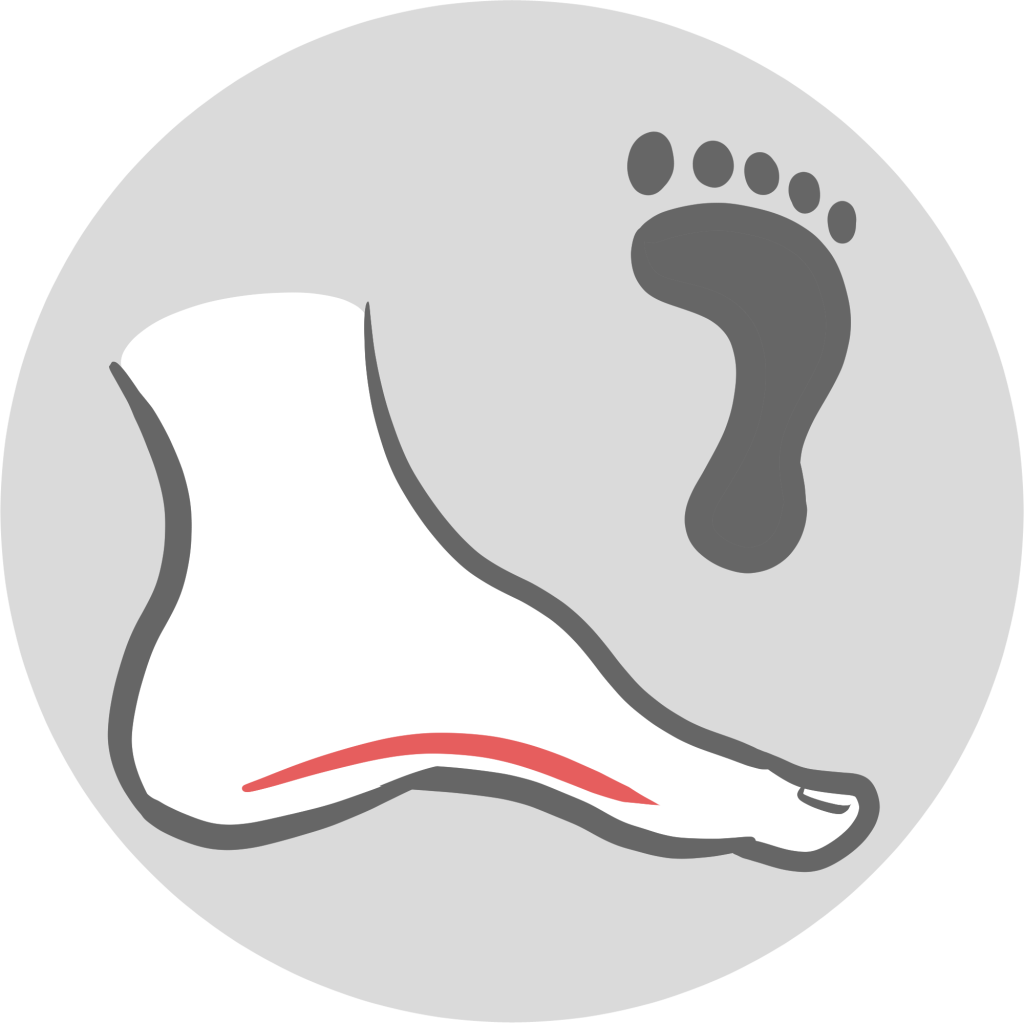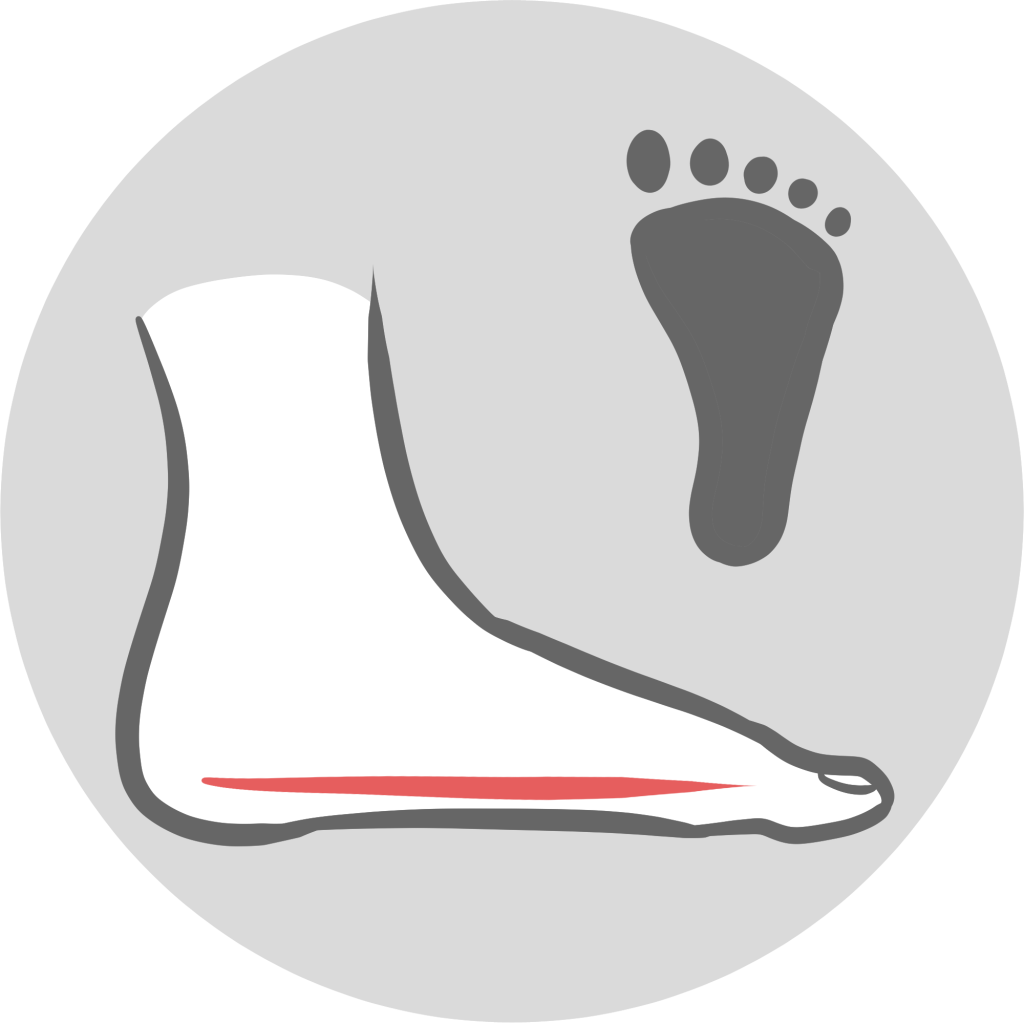
NORMAL ARCH
Ideally, the arch of your foot curves slightly upward (like a question mark) around the middle of the foot. That means your arches are at a proper height to absorb and distribute the impact from walking and other physical activities. The arch functions not only to absorb shock when we walk, run or jump, but also to help us maintain stability.
The normal arch is biomechanically efficient for the feet, but can still suffer from common foot problems such as heel pain or metatarsalgia without proper footwear.




